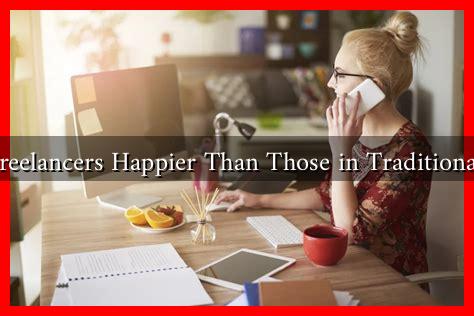-
Table of Contents
Are Freelancers Happier Than Those in Traditional Jobs?
In recent years, the gig economy has surged, leading many to question the traditional employment model. With the rise of freelancing, a pertinent question arises: Are freelancers happier than those in traditional jobs? This article delves into the nuances of job satisfaction among freelancers and traditional employees, exploring various factors that contribute to happiness in the workplace.
The Allure of Freelancing
Freelancing offers a unique set of advantages that can significantly enhance job satisfaction. Here are some key benefits that freelancers often cite:
- Flexibility: Freelancers can choose their working hours and locations, allowing for a better work-life balance.
- Autonomy: Being your own boss means making decisions that align with personal values and goals.
- Diverse Opportunities: Freelancers often work on a variety of projects, which can keep work interesting and engaging.
- Potential for Higher Earnings: Many freelancers can set their rates and take on multiple clients, potentially leading to higher income than traditional jobs.
According to a survey by Upwork, 79% of freelancers reported being satisfied with their work, compared to only 64% of traditional employees. This statistic highlights a significant difference in job satisfaction levels between the two groups.
The Challenges of Freelancing
While freelancing has its perks, it also comes with challenges that can impact happiness:
- Income Instability: Freelancers may face fluctuating income, which can lead to financial stress.
- Isolation: Working independently can lead to feelings of loneliness and disconnection from peers.
- Self-Discipline Required: Freelancers must manage their time effectively, which can be difficult without a structured environment.
These challenges can detract from the overall happiness of freelancers, making it essential to consider both sides of the equation.
The Stability of Traditional Jobs
On the other hand, traditional jobs offer a different set of advantages that can contribute to employee satisfaction:
- Job Security: Traditional employment often comes with a steady paycheck and benefits, providing financial stability.
- Social Interaction: Working in an office allows for daily interactions with colleagues, fostering a sense of community.
- Clear Career Path: Many traditional jobs offer structured career advancement opportunities, which can be motivating for employees.
However, traditional jobs also have their downsides. A rigid schedule, limited flexibility, and potential for burnout are common complaints among employees. A study by the Gallup Organization found that only 34% of U.S. employees felt engaged at work, indicating a significant level of dissatisfaction.
Comparative Happiness: A Balancing Act
When comparing happiness levels between freelancers and traditional employees, it’s essential to recognize that individual preferences play a crucial role. Some people thrive in structured environments, while others flourish with independence. Here are some factors that influence happiness in both scenarios:
- Personality Type: Introverts may prefer freelancing, while extroverts might enjoy the social aspects of traditional jobs.
- Life Stage: Younger individuals may favor the flexibility of freelancing, while those with families might prioritize job security.
- Financial Goals: Individuals seeking higher earnings may find freelancing more appealing, while those valuing stability may prefer traditional roles.
Conclusion
In conclusion, whether freelancers are happier than those in traditional jobs largely depends on individual circumstances and preferences. Freelancers enjoy flexibility and autonomy, which can lead to higher satisfaction, but they also face challenges like income instability and isolation. Conversely, traditional employees benefit from job security and social interaction but may experience dissatisfaction due to rigid structures and limited flexibility.
Ultimately, the key to happiness in any job lies in aligning one’s work with personal values, goals, and lifestyle preferences. As the workforce continues to evolve, understanding these dynamics will be crucial for both employees and employers in fostering a happier, more engaged workforce.

